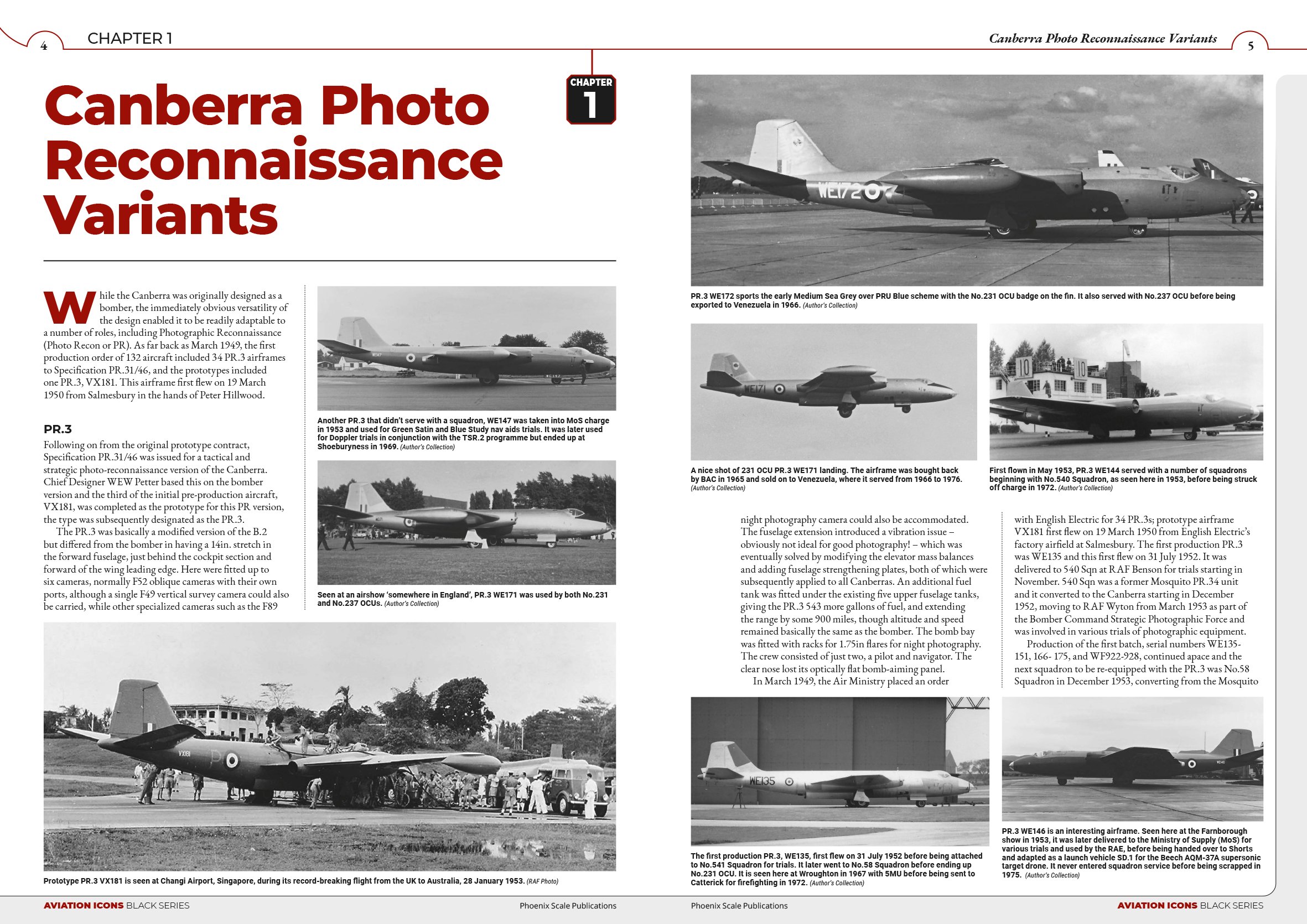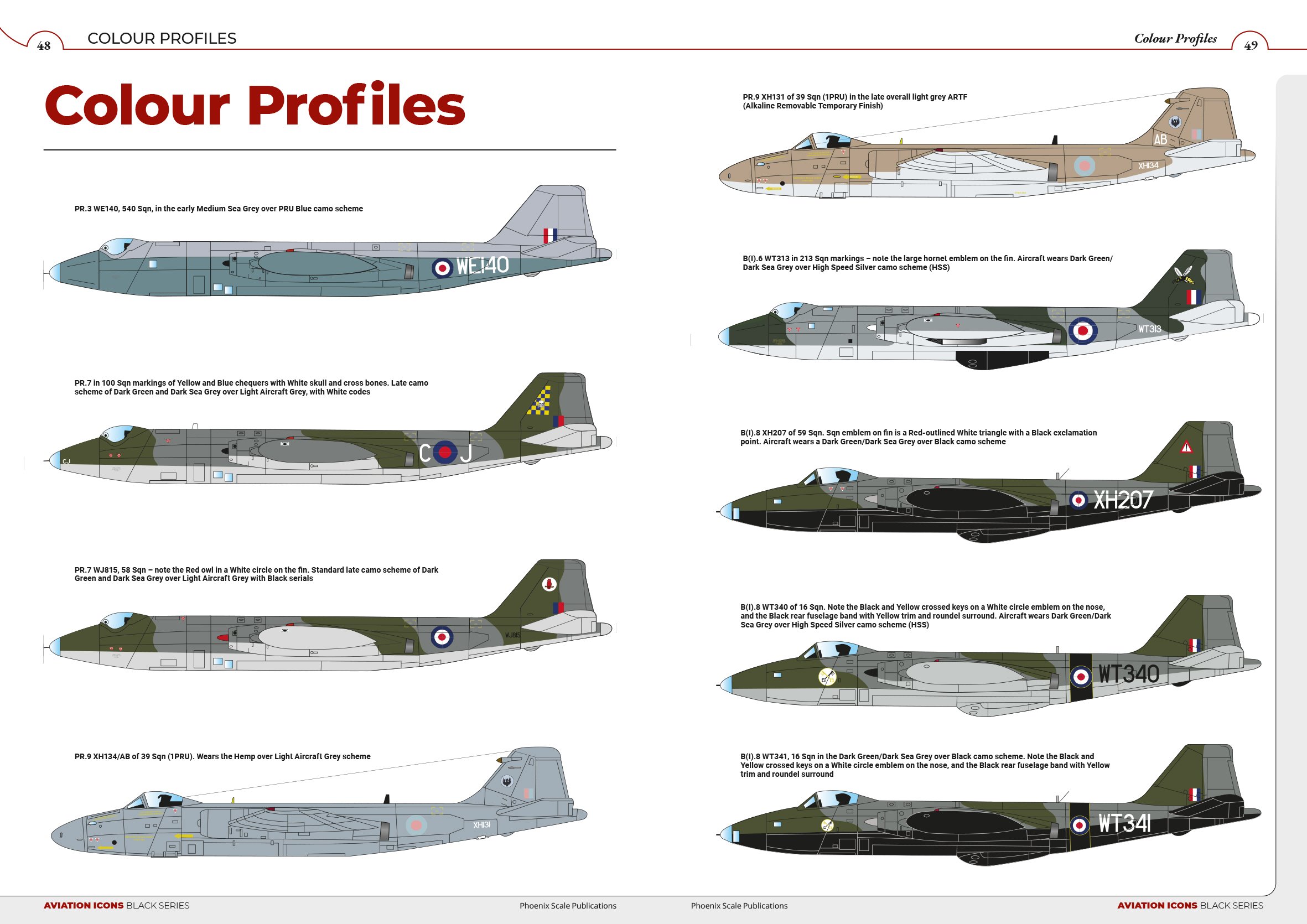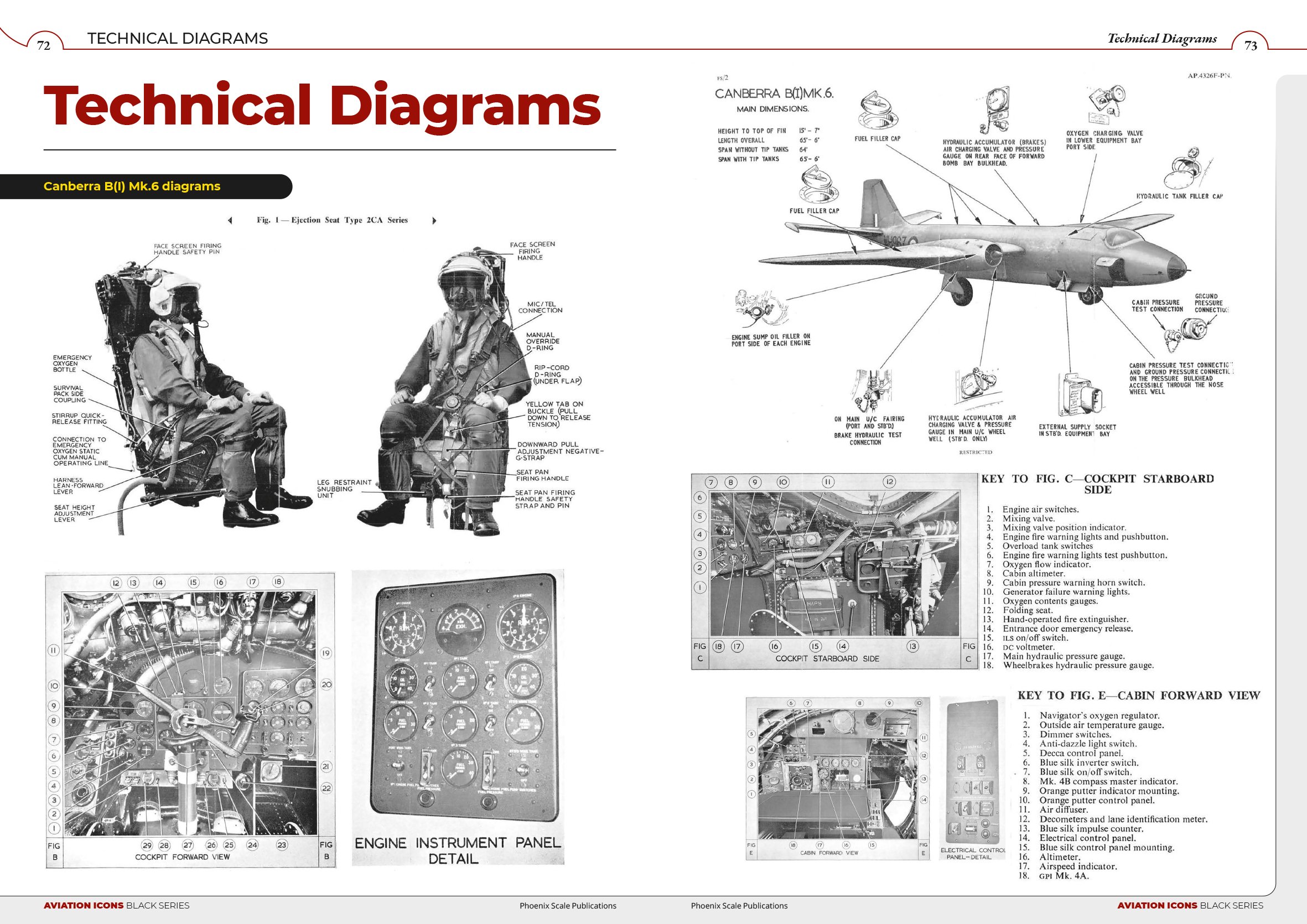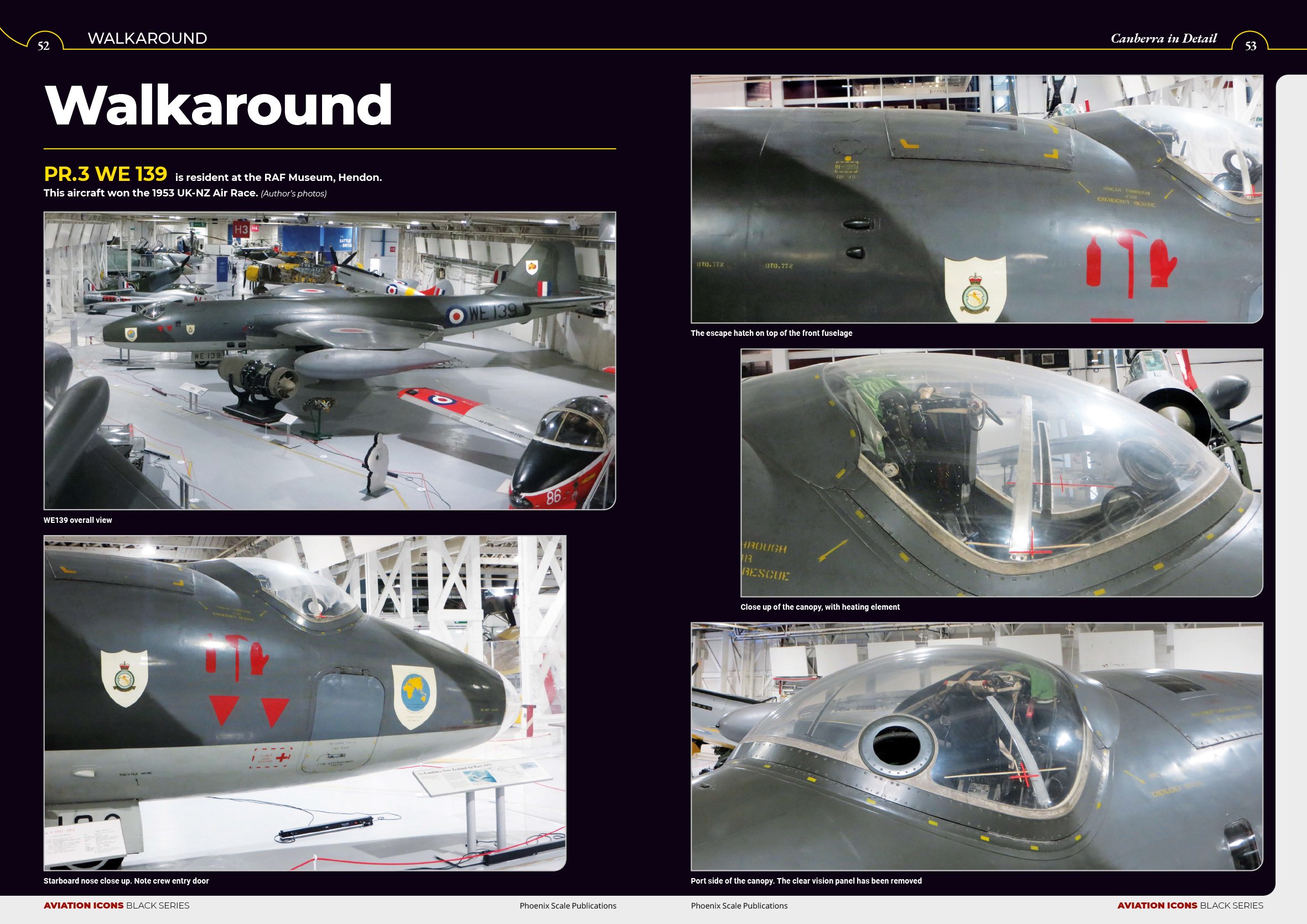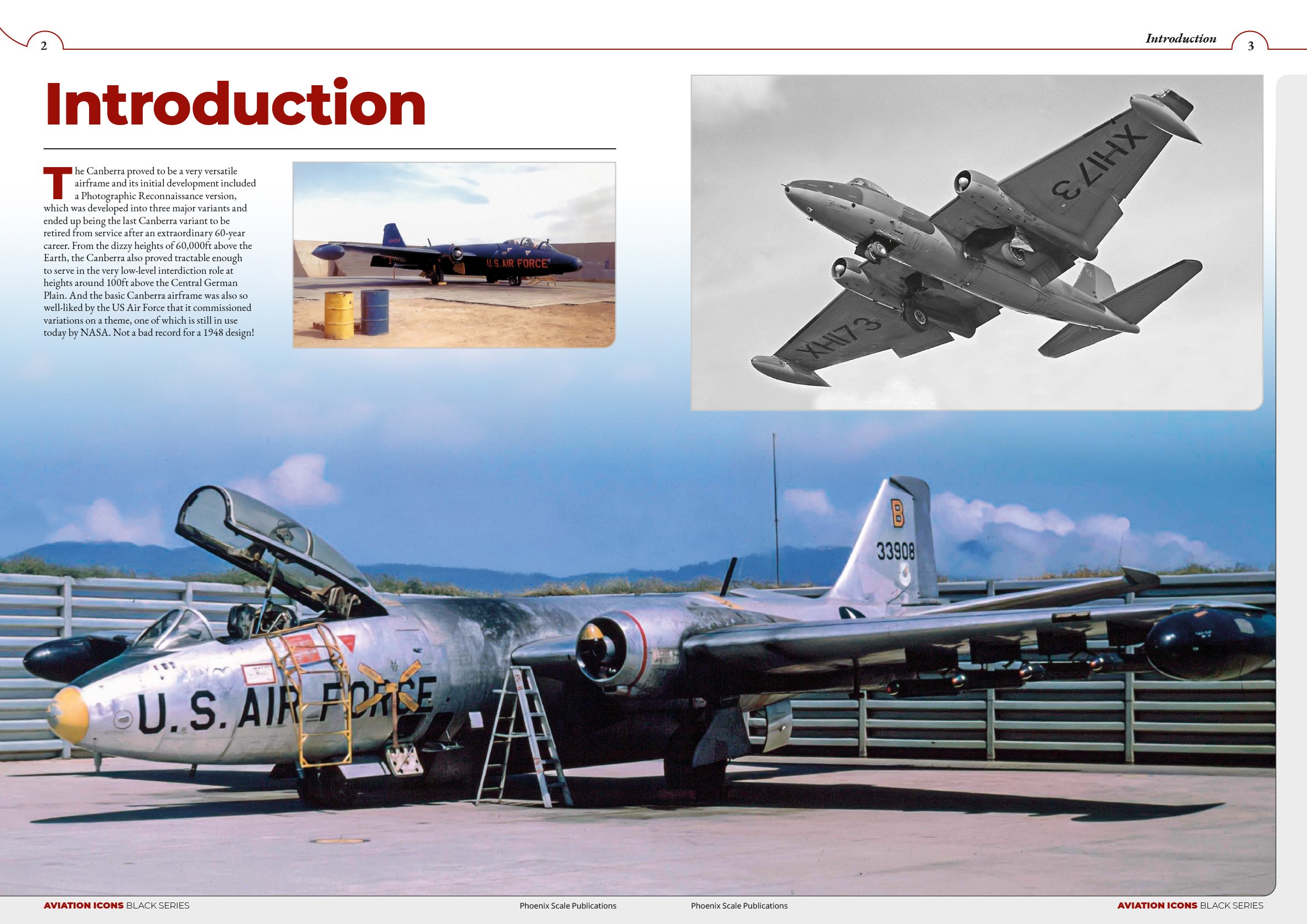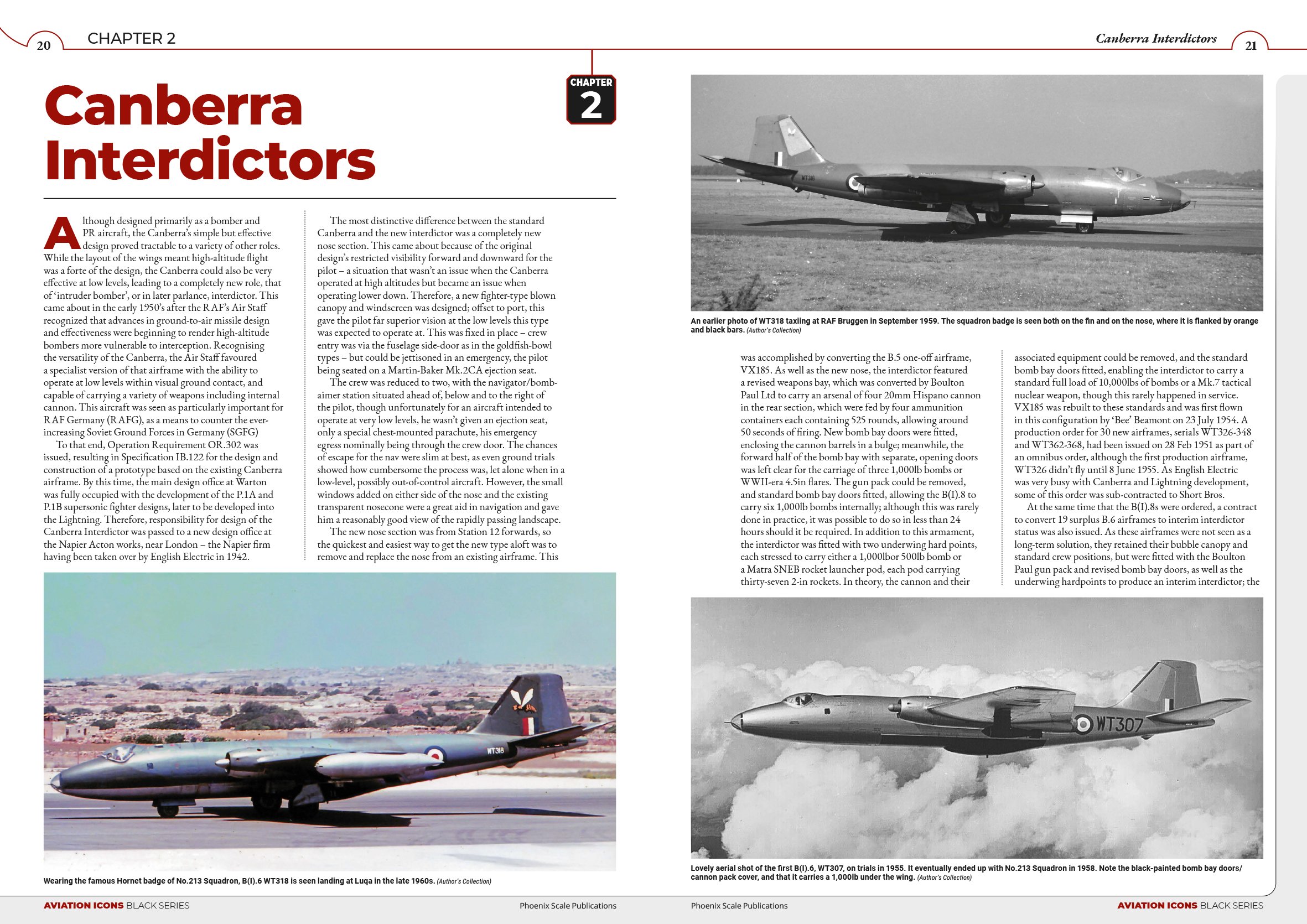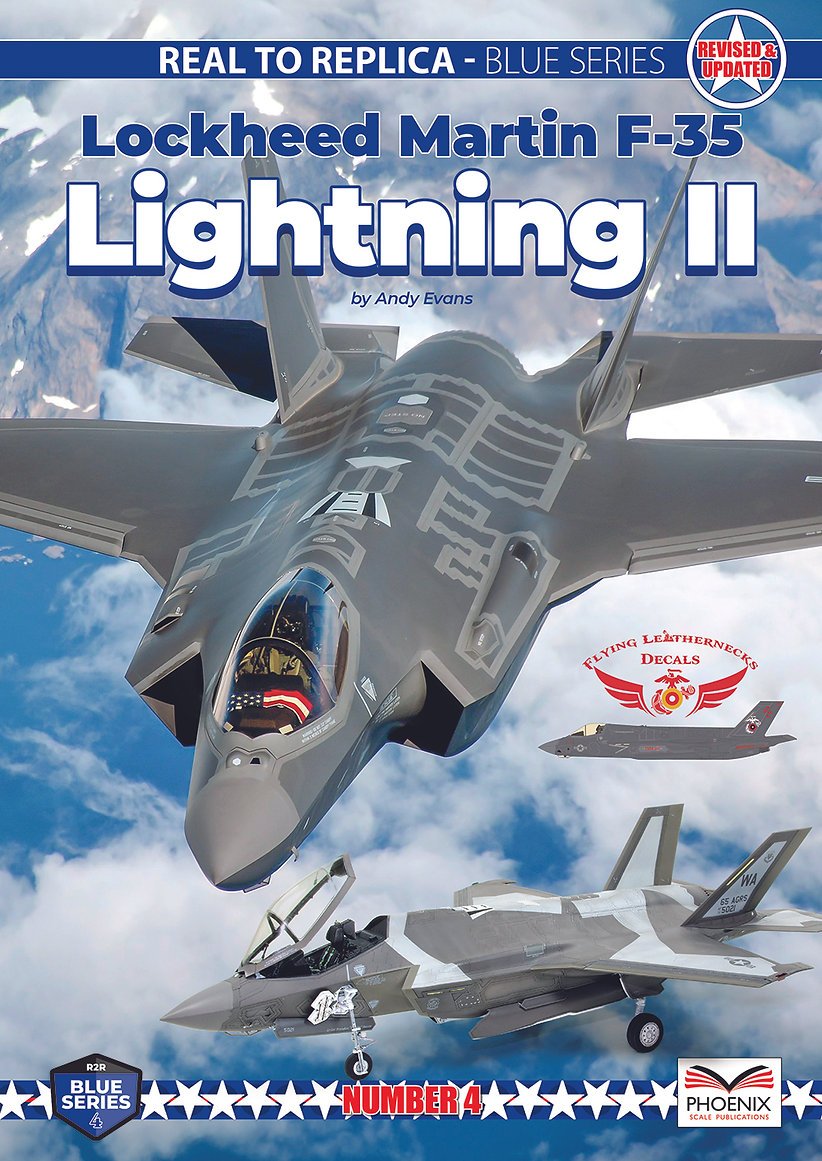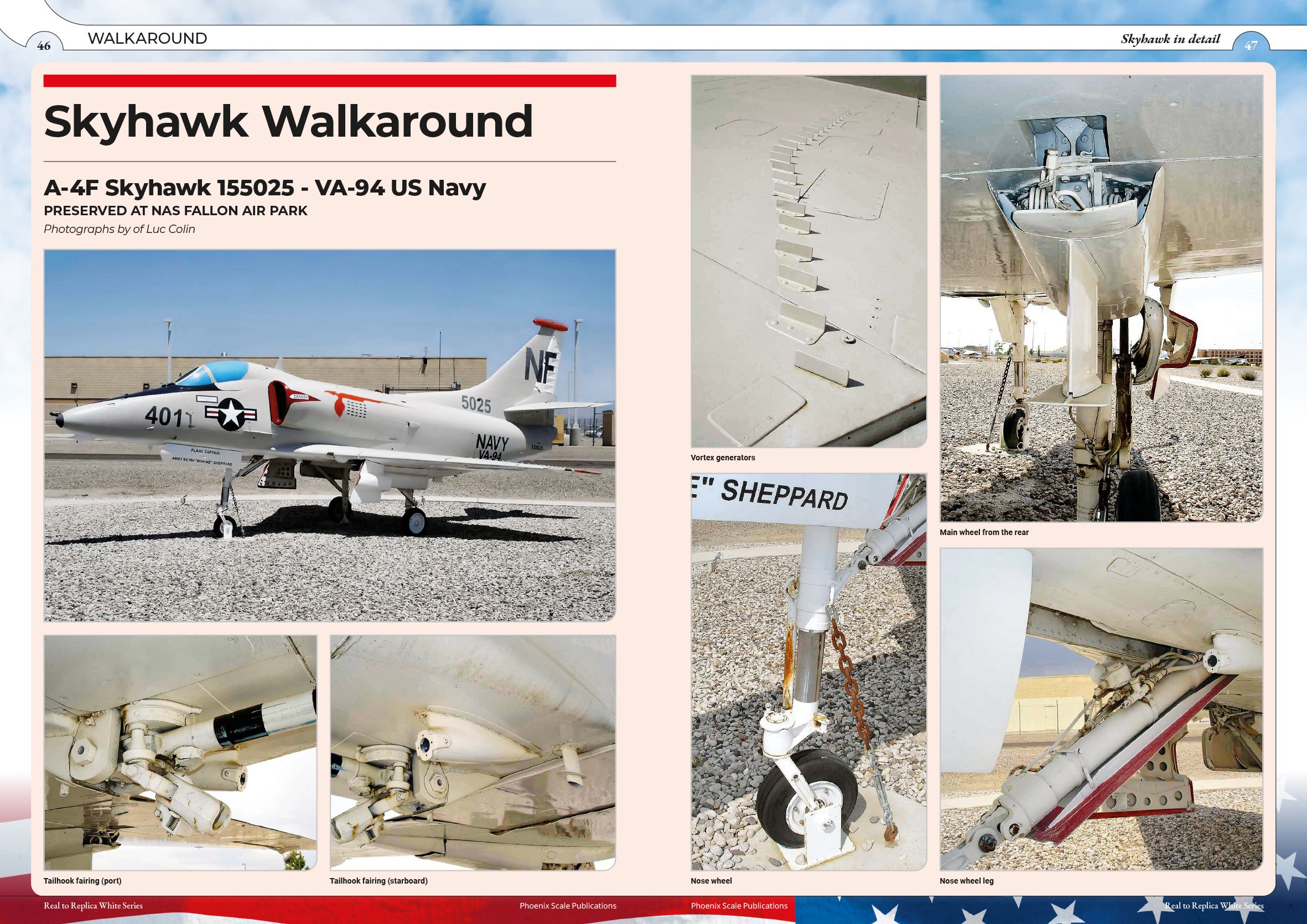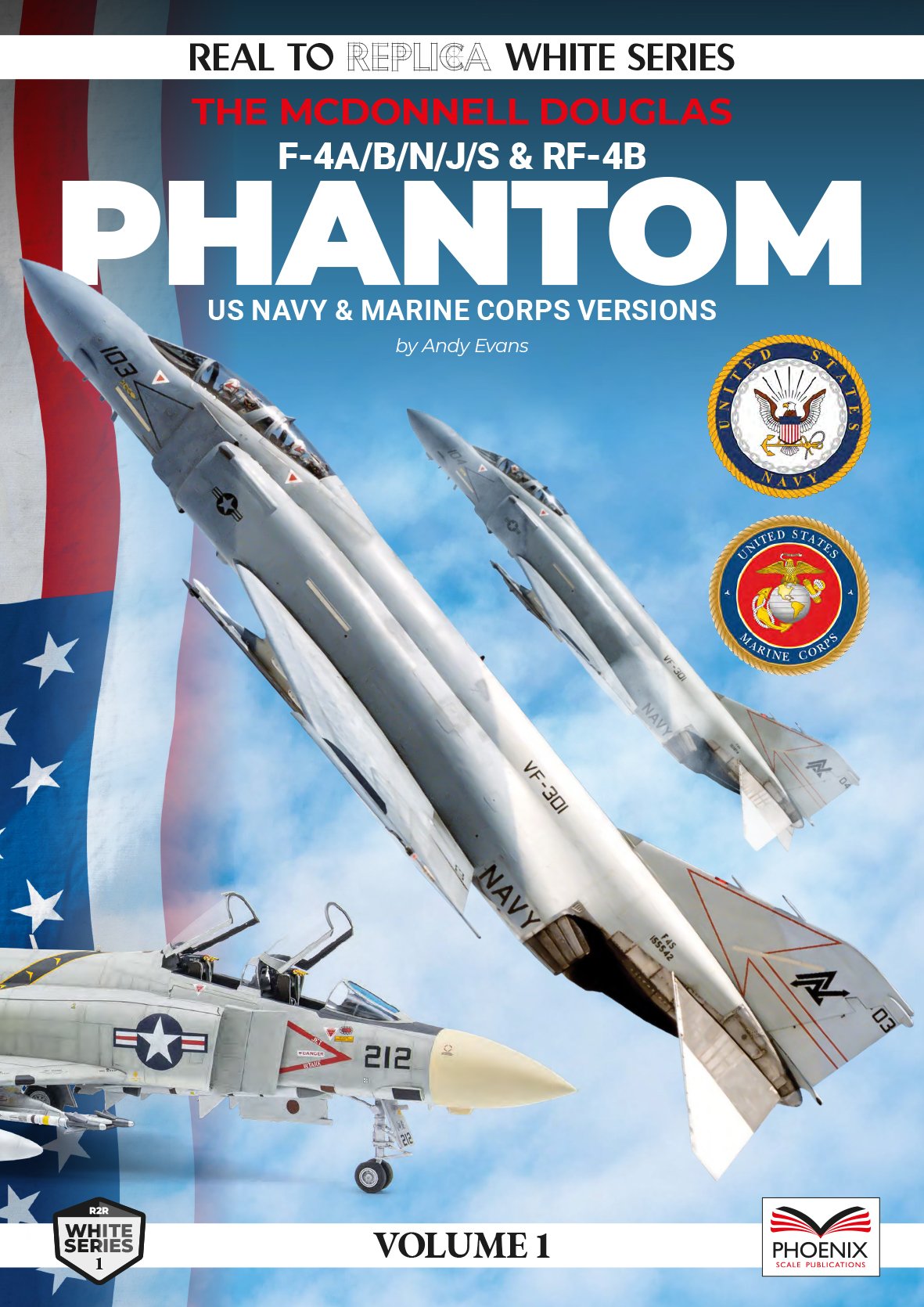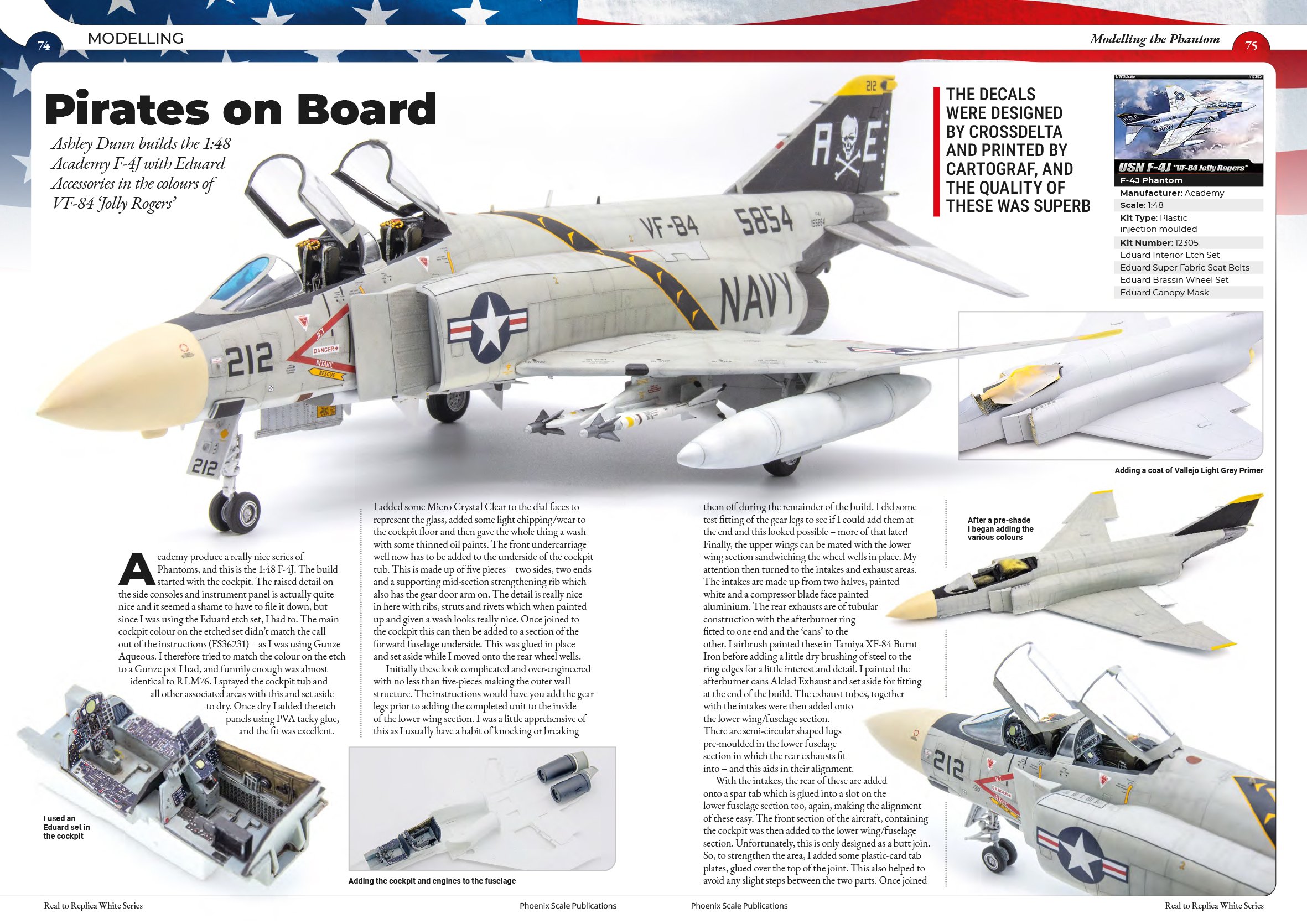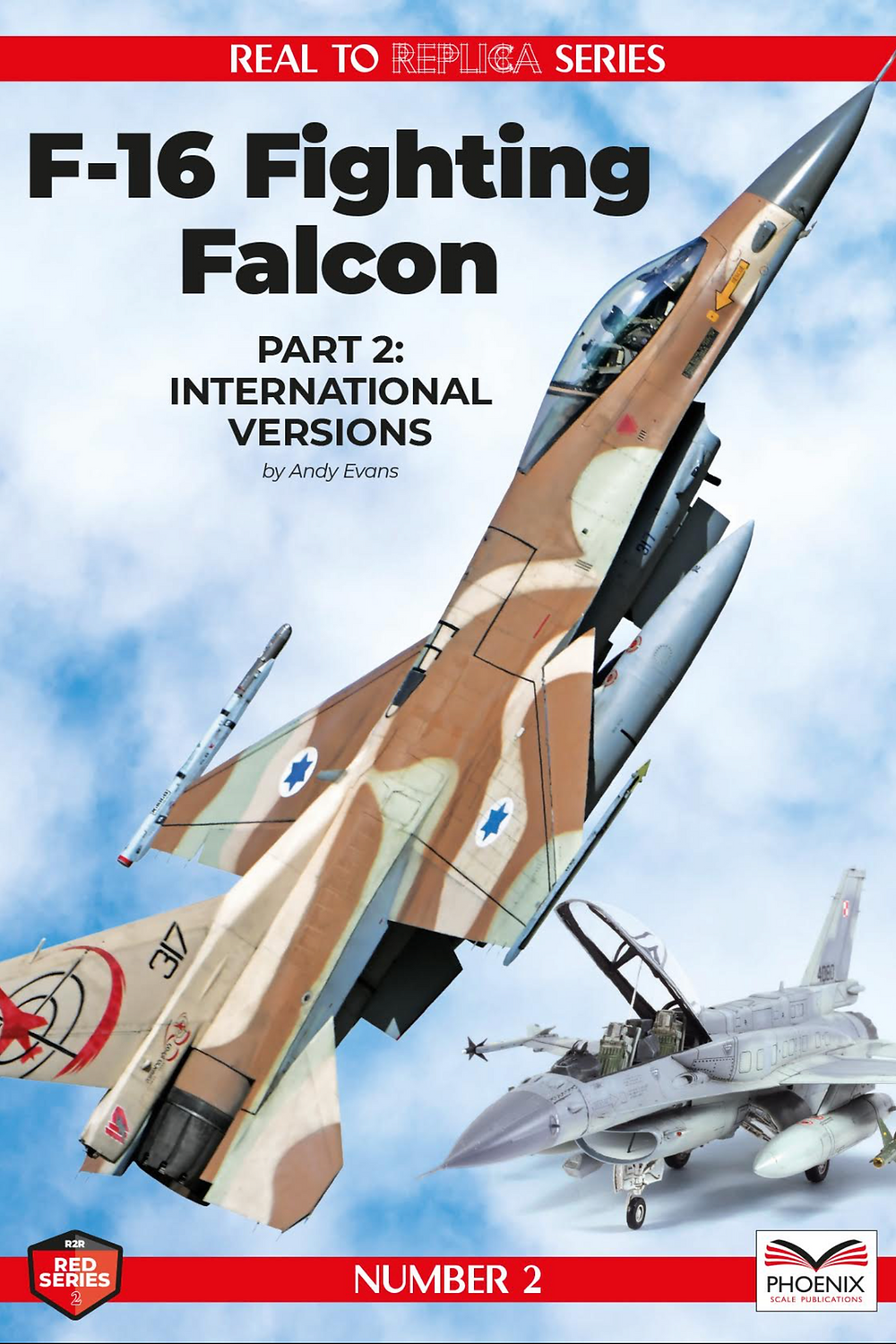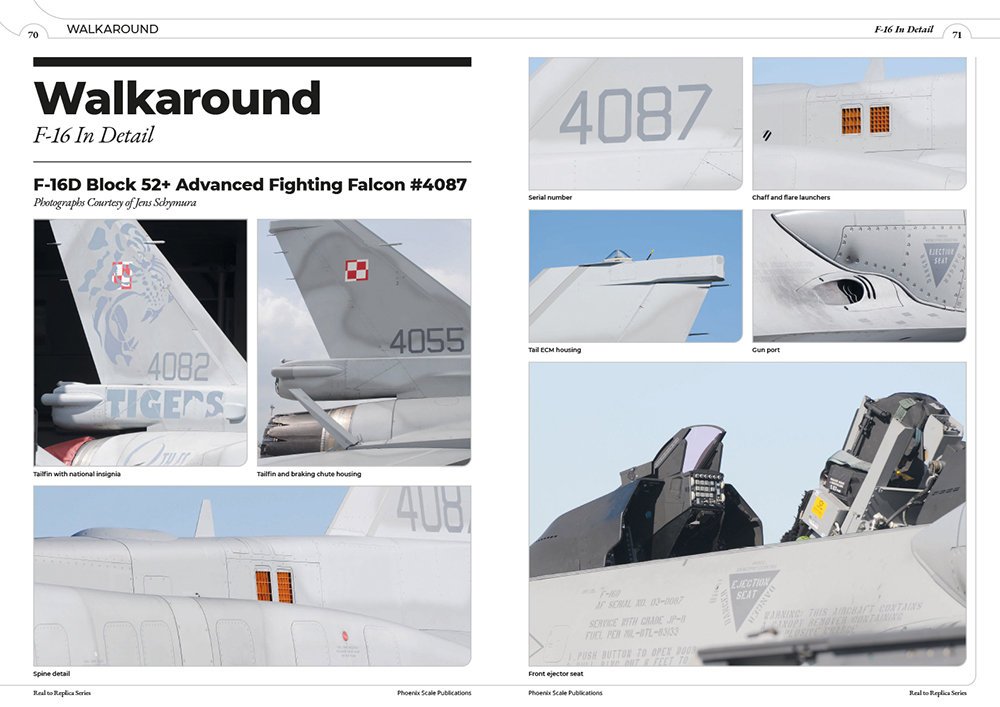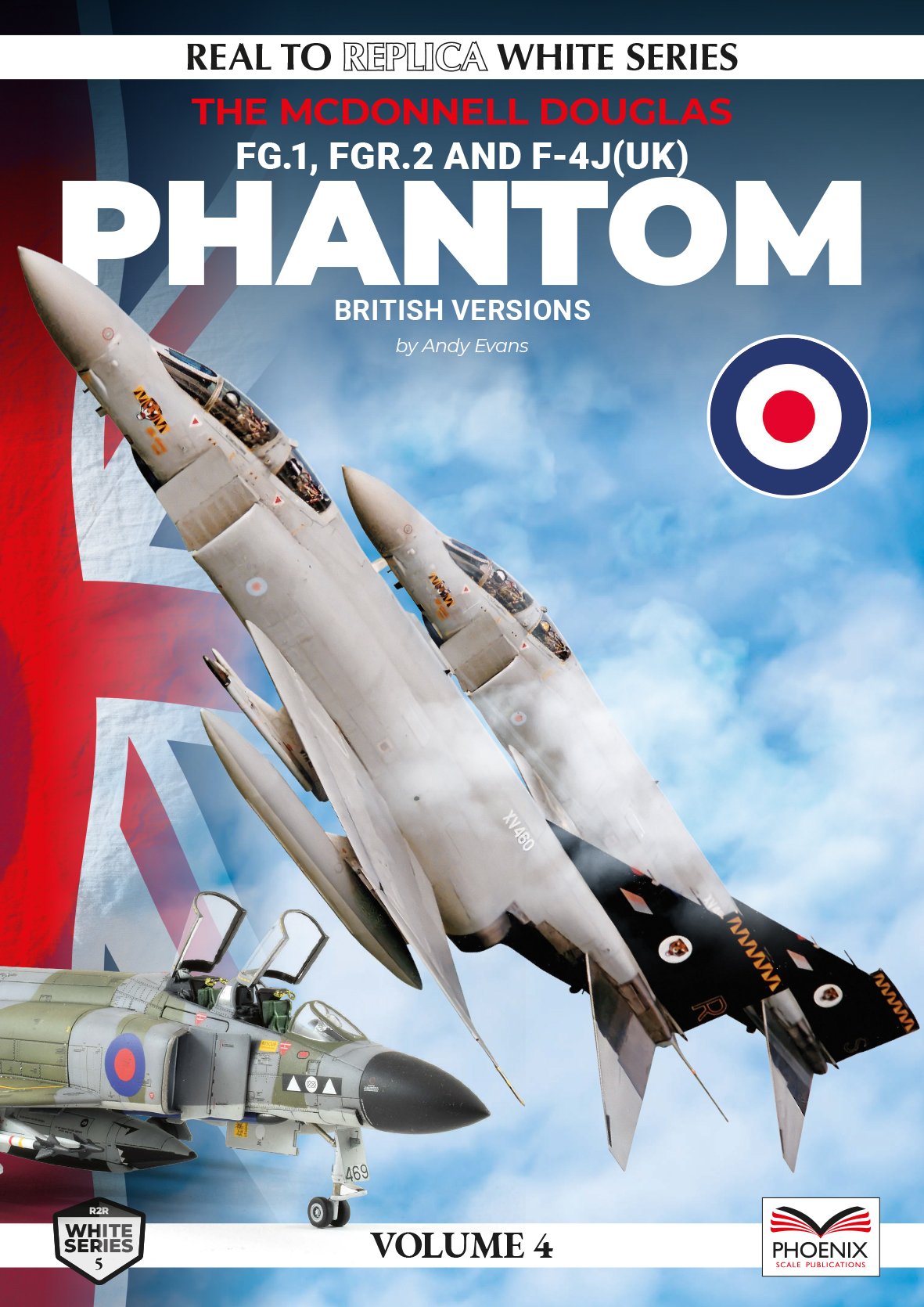
Martin B-57 and English Electric Canberra
USAF Versions B-57 to B-57G, EB-57A & WB-57F
RAF Versions B(I).6 to PR.9
By Paul Bradley
Volume 2
The Martin B-57 Canberra was, and to some extent still is an American-built, twin-engined tactical bomber and reconnaissance aircraft that entered service with the US Air Force in 1953. The B-57 was a license-built version of the British designed English Electric Canberra and manufactured by the Glenn L Martin Company. Initial Martin-built models were virtually identical to their British-built twinjet counterparts; however, Martin later modified the design with a new nose with tandem cockpits and incorporated larger quantities of US-sourced components and produced the aircraft in several variants. The B-57 Canberra holds the distinction of being the first jet bomber in service to drop bombs during combat, and as such was used extensively during the Vietnam War. Specialised versions of the type were also produced and served as high-altitude aerial reconnaissance platforms and as electronic warfare aircraft. In 1983, the USAF opted to retire the type; however, three remained flightworthy as WB-57Fs and are technically assigned to the NASA Johnson Space Center and used as high-altitude scientific research aircraft but have also been used for testing and electronic communications in both the US and Afghanistan.
When the Vickers Valiant entered service in 1955 the RAF’s Bomber Command’s force of Canberras, equipped for high-level conventional bombing was gradually phased out, and the type began service in the low-level interdictor, strike and ground-attack role, and versions dedicated to this task were produced. The interim B(I).6, a mark converted from the B.6 by adding provision for a pack of four Hispano 20mm cannon in the rear bomb bay and underwing pylons for bombs and rockets entered service in 1955, with the definitive, new-build B(I).8, which added a new forward fuselage with a fighter-style canopy for the pilot, entering service in January 1956. Bomber Command retired the last of its UK based Canberras on 11 September 1961, but units based in Germany, Cyprus and Singapore continued until the Cyprus-based squadrons and one of the RAF Germany squadrons disbanded in 1969, with the Singapore-based unit following in 1970. The three remaining RAF Germany units remained operational until 1972, when the last Canberra bombers in RAF service were retired. The RAF continued to operate the Canberra after 1972, employing it for reconnaissance with squadrons equipped with PR.7s and PR.9s. The PR.9 variant remained in service with No.39 (1 PRU) Squadron until July 2006 for strategic reconnaissance and photographic mapping, seeing service in the 2003 invasion of Iraq, and up to June 2006, in Afghanistan. The unit finally stood down on 28 July 2006, when a flypast by a Canberra PR.9s was conducted.
In Volume 2 of the Canberra story, author Paul Bradley looks at both the Martin B-57, and the RAF’s low-level strike and photo reconnaissance versions, with full historic details, colour profiles, walk arounds as well as technical drawings, and continues the Canberra story.

